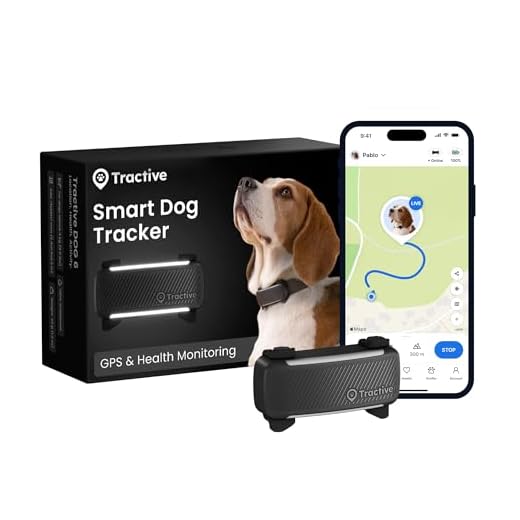




Observing changes in behaviour or routine is the first step to understanding if your furry friend is unwell. If your pet is lethargic, loses interest in play or food, or seems unusually withdrawn, these might be red flags. Pay attention to any sudden weight loss or gain, as this can indicate underlying health issues.
Monitor their drinking habits. Increased thirst or decreased water intake can signal health problems. Additionally, keep an eye on their bathroom habits; straining to urinate or unusual bowel movements should prompt a visit to the vet.
A change in coat condition can also be a telling sign. If your pet’s fur appears dull, dry, or is shedding excessively, it might be time to investigate further. Don’t forget to check for signs of discomfort, such as excessive grooming or whining when touched, which could indicate pain or distress.
Lastly, any unusual behaviours, such as pacing, hiding, or aggression, can signal that something is amiss. Trust your instincts; if you sense something isn’t right, seeking veterinary advice is always a wise choice.
Signs of Illness in Your Canine Companion
If your furry friend is feeling unwell, observing certain signs can help you identify the issue. Pay attention to changes in behaviour, appetite, and physical condition. Here are some indicators to consider:
| Symptom | What to Look For |
|---|---|
| Appetite Changes | Sudden lack of interest in food or excessive eating. |
| Energy Levels | Unusual lethargy or hyperactivity not typical for your pet. |
| Grooming Habits | Neglecting grooming or excessive licking of certain areas. |
| Physical Symptoms | Coughing, sneezing, vomiting, or unusual stool consistency. |
| Behavioural Changes | Increased aggression, withdrawal, or signs of anxiety. |
| Weight Fluctuations | Noticeable weight loss or gain over a short period. |
| Hydration Status | Drinking significantly more or less water than normal. |
Monitor your pet closely for any combination of these signs. Early detection can make a significant difference in treatment and recovery. If you observe several concerning symptoms, consult a veterinarian without delay.
Identifying Changes in Appetite and Thirst
If you notice a reduction in your pet’s food intake or a sudden aversion to their usual meals, it’s a red flag. Keep an eye on their eating habits; a shift from regular enthusiasm to disinterest may indicate discomfort or illness. For instance, my own experience with Bella, my playful spaniel, taught me to take note when she sniffed her kibble and walked away. That day, I realised something wasn’t right.
Monitor water consumption as well. Increased thirst can signify health issues like diabetes or kidney problems, while a decrease might indicate dehydration or dental pain. When I saw Bella guzzling water excessively, it prompted a vet visit, leading to the discovery of a minor urinary tract infection. Pay attention, and track changes in both food and water intake to catch potential issues early.
Be observant of their behaviour around mealtime. If your furry friend seems anxious or restless while eating, it could point to underlying pain or distress. I learned this the hard way when Bella refused to eat and paced around her bowl. A quick check revealed a sore tooth that needed attention.
Lastly, document any changes. Keeping a simple log of their eating and drinking habits can help you communicate effectively with your veterinarian. If you notice a pattern, it becomes easier to identify potential health concerns. Your vigilance can make a significant difference in their well-being.
Observing Behavioural Changes
Pay attention to shifts in your pet’s usual conduct. If your furry friend seems less playful or avoids interaction, it’s a sign something might be amiss. For instance, when my Labrador, Max, suddenly lost interest in our daily walks and preferred to stay curled up in his bed, I sensed trouble. Changes in energy levels can indicate discomfort or illness.
Monitor any signs of agitation or restlessness. If your canine companion is pacing around the house or barking excessively without clear reasons, it might be a cue to check in on their health. I recall a time when Max became unusually clingy, following me everywhere. That behaviour change was a clear indicator that he was not feeling his best.
Look for changes in social behaviour too. A normally sociable pet that begins hiding or avoiding family members may be experiencing stress or discomfort. One day, I noticed Max retreating to a quiet corner, which was out of character for him. A visit to the vet revealed an ear infection that had been causing him pain.
Changes in sleeping patterns can also provide valuable insights. If your pet is sleeping more than usual or having trouble settling down, it could signal that something isn’t right. In Max’s case, when he started sleeping through the night but seemed restless during the day, it led me to investigate further.
Lastly, consider their response to stimuli. If your pet becomes unusually sensitive to loud noises or starts to flinch at everyday occurrences, this might warrant attention. Staying observant and responsive to these behavioural nuances can help catch potential health issues early on.
For instance, while cleaning the patio with a pressure washer surface cleaner with wheels, I noticed Max becoming anxious. It was a reminder that even common activities can affect pets differently when they’re feeling unwell.
Monitoring Physical Symptoms and Signs
Pay close attention to your pet’s coat and skin. A dull, dry coat or excessive itching can signal underlying health issues. Regular grooming not only helps maintain cleanliness but also allows for early detection of abnormalities such as lumps or skin irritations.
Check the eyes. Redness, excessive tearing, or cloudiness can indicate problems that require veterinary attention. Clear, bright eyes usually reflect good health. If you notice any discharge, take action quickly.
Observe your pet’s breathing. Rapid, shallow breaths or difficulty inhaling can be alarming. A healthy animal typically breathes steadily and calmly. If you notice irregularities, consult a veterinarian.
Monitor mobility. Limping or reluctance to jump could suggest pain or discomfort. Watch for changes in the way your companion moves. A sudden lack of enthusiasm for playtime or walks may indicate something is amiss.
Keep an eye on the bathroom habits. Changes in urination frequency, consistency of stools, or signs of straining can point to gastrointestinal or urinary issues. Regularly cleaning up after your pet can help you track any unusual changes.
Finally, temperature can be a significant indicator. A normal range is between 37.5 to 39.2 degrees Celsius. Use a digital thermometer designed for animals, if necessary, to monitor fluctuations. If the temperature falls outside this range, seek veterinary advice without delay.
Understanding Changes in Energy Levels
Pay close attention to your pet’s activity patterns. If your furry friend suddenly becomes less enthusiastic about walks or playtime, it may signal an underlying issue. For instance, when Bella, my retriever, started to show reluctance for her usual fetch games, I immediately sensed something was off. She typically bounded around with excitement, but when she began to lag behind, I knew I had to investigate further.
Monitor not only the decrease in energy but also any unusual bursts of hyperactivity. Sometimes, a shift in behaviour can indicate discomfort or stress. If your companion seems restless, pacing around the house or unable to settle down, it could be a sign of distress. I remember a time when Max, my beagle, became unusually agitated; after a vet visit, we discovered he was experiencing pain due to an ear infection.
Consistency is key. If your pet normally has a predictable energy level and suddenly deviates from that, take note. Track these changes over a few days. Are they lethargic in the mornings but more active at night? Such patterns can provide valuable insights. I once kept a simple log of Bella’s activity, which helped the vet understand her condition better.
Always consider external factors as well. Weather changes, seasonal allergies, or even recent changes in routine can affect energy levels. I noticed that during pollen season, both Bella and Max tended to be less energetic, which was a clear marker for me to keep an eye on their well-being.
Should you observe significant changes, consulting a veterinarian is advisable. They can help identify whether these shifts are part of a broader health concern or just temporary fluctuations. Regular check-ups can also ensure that any potential issues are addressed before they escalate. Your pet relies on you to notice these subtle signs, so staying vigilant is crucial.
Recognising Signs of Pain or Discomfort
Pay attention to subtle changes in posture and movement. Animals often try to hide their pain, so observing how they stand, sit, or walk can provide crucial insights. Look for signs such as:
- Altered gait – limping or favouring one side.
- Stiffness – difficulty getting up or lying down.
- Flattened ears or tucked tail – indicators of distress.
Vocalisation can also reveal discomfort. Unusual whining, growling, or barking might indicate something is wrong. If your furry friend suddenly becomes more vocal or silent when they usually aren’t, take note.
Physical Reactions to Touch
When gently touching different areas of the body, observe your pet’s reactions. Flinching, pulling away, or growling in response to touch can signify pain. Check sensitive areas like the abdomen, back, and joints for any abnormal response.
Changes in Facial Expressions
Facial expressions can convey a lot. A relaxed face transforms into one that appears tense or anxious when in discomfort. Look for signs like:
- Closed eyes or squinting.
- Whiskers pulled back.
- Excessive panting or drooling.
Being attentive to these signs can lead to quicker interventions. If you suspect anything unusual, consult a veterinary professional for guidance.
Knowing When to Consult a Veterinarian
Seek veterinary help if symptoms persist beyond 24 hours. Subtle signs can escalate quickly, so don’t hesitate. A sudden onset of vomiting or diarrhoea, regardless of the frequency, warrants professional evaluation. If your furry friend shows signs of lethargy or unresponsiveness, it’s time to consult an expert.
Changes in physical appearance, such as unusual swelling or skin lesions, should not be ignored. If your companion exhibits laboured breathing or coughing, immediate assessment is crucial. Any signs of confusion or disorientation can indicate underlying health issues that require a veterinarian’s attention.
It’s wise to seek advice if you notice your pet experiencing unusual vocalisations, such as excessive whining or growling, especially if these changes are accompanied by other concerning symptoms. Additionally, if you suspect poisoning or ingestion of harmful substances, act swiftly and contact your vet.
Always trust your instincts. If something feels off, it’s better to err on the side of caution. Regular check-ups can help preempt potential health problems, ensuring your pet remains in tip-top shape. For further guidance on pet nutrition, check out who makes blue diamond dog food.










